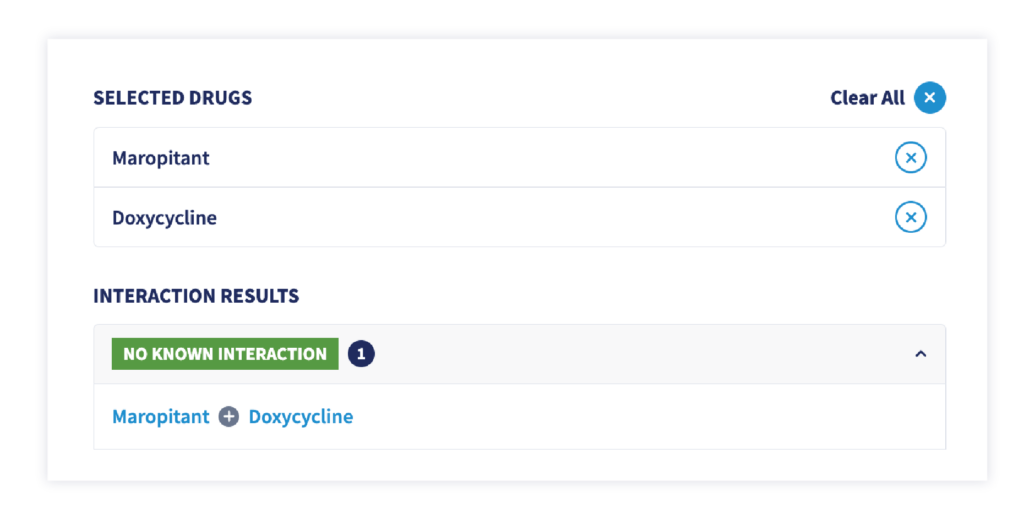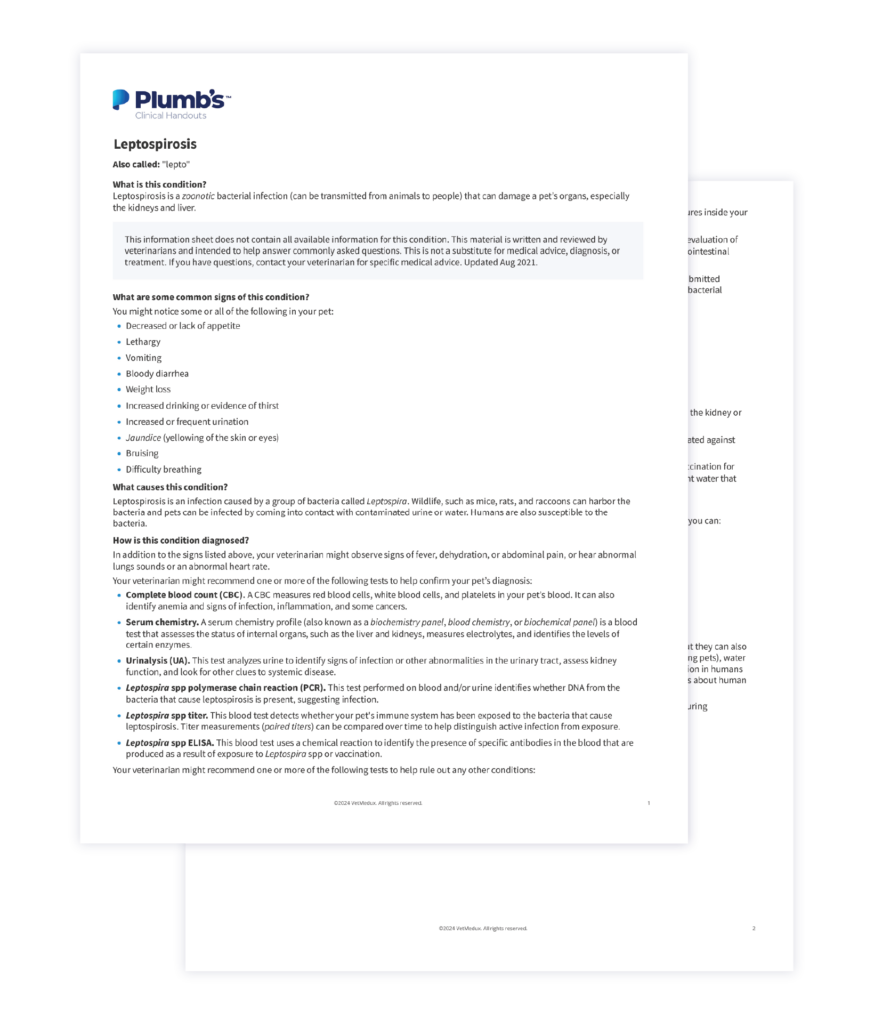As veterinarians, we all need a source of trusted clinical information to rely on, whether we’re fresh out of vet school or have spent years in practice gaining a wealth of experience—and gray hair.
When you’re working through a case, clinical references can help you double-check drug details, confirm you’re following the latest diagnostic and treatment recommendations, and find pet owner education materials. It’s a real time-saver when you can find all those details in one place.
In this blog post, see how a clinical decision support tool like Plumb’s Pro™ gives you swift support while you work through a case of leptospirosis in a dog.
Meet Your Patient and Pet Owner
Your patient today is Brew, an 18-month-old intact male Labrador retriever. He’s been lethargic for the past two days and isn’t interested in eating, which is unusual for him. He vomited several times yesterday, and his owner, Jeff, thinks he’s drinking and urinating more than usual.
Brew has been healthy until now, is generally very active, and spends a lot of time in the wilderness hiking and camping with Jeff.
Jeff isn’t aware of any dietary indiscretions or toxin exposure, and he is pretty sure Brew is up-to-date on vaccinations and parasite prevention.
On physical exam, Brew’s body condition score is 5/9. He’s lethargic and seems reluctant to move, and his sclera and gingiva appear mildly icteric. His temperature, heart rate, and respiratory rate are within normal limits, and no other abnormalities are found.
Get Started With Baseline Diagnostics
You’d like to start with baseline diagnostics and recommend a complete blood count, serum chemistry panel, and urinalysis.
Results indicate mild anemia (PCV 32%) and mild neutrophilia. Brew’s ALT, AST, ALP, and total bilirubin are moderately elevated. He is moderately azotemic and hyperphosphatemic, and mildly hypoalbuminemic. His urinalysis reveals hyposthenuria.
You realize that Brew’s clinical signs and laboratory results are classic for leptospirosis, so you ask Jeff whether Brew has ever been vaccinated against it. He says Brew has been vaccinated, but when you obtain his medical records, you see
Brew only received one leptospirosis vaccine as a puppy at 12 weeks old, and he didn’t return for the booster.
You decide to proceed with in-clinic leptospirosis IgM titers, which come back positive, but you’re unsure how to interpret these results given Brew’s vaccination history. You turn to Plumb’s Pro™ and find an algorithm on leptospirosis to give you guidance.
Follow an Algorithm for Step-by-Step Support With Leptospirosis
The leptospirosis algorithm in Plumb’s Pro™ indicates that when IgM results are positive and at least 3 months have passed since vaccination, the patient is presumed positive. However, confirmation via urine PCR is recommended.

You send out a sample for urine PCR and decide to begin empirical treatment for leptospirosis in the meantime.
It’s been a while since you’ve treated leptospirosis, so you’d like to get the latest diagnostic and treatment guidance.
You turn back to Plumb’s Pro™ and open the Dx & Tx monograph on leptospirosis. You review the treatment section and make a treatment plan for Brew that includes hospitalization, intravenous fluids, and doxycycline.
You’d also like to start Brew on maropitant for nausea, and while you’re fairly sure you can use doxycycline and maropitant together without risking a drug interaction, you quickly confirm that’s the case with the drug interaction checker.

As you continue reviewing the Dx & Tx, you’re reminded that leptospirosis is zoonotic and review the infection control section to ensure you’re doing everything you can to keep your veterinary team safe.
You print the section so you can discuss precautions with your team, like minimizing Brew’s movement around the clinic and having staff wear personal protective equipment.

The Dx & Tx also notes that leptospirosis is reportable in some areas, so you check your state requirements.
Finally, you review the clinical follow-up and monitoring section so you have a plan for Brew’s follow-up visits and know which diagnostics to perform. You see that leptospirosis vaccination is recommended as soon as possible after recovery.
Ensure Clear Communication With Pet Owner Handouts
You’ve got a lot of information to discuss with Jeff today, and you want to ensure he’s fully informed about Brew’s condition and your recommendations, so you print the clinical handout on leptospirosis. You go through the handout with Jeff, highlighting the most important points.

You also discuss the plan for follow-up visits and how it’s essential to vaccinate Brew for leptospirosis as soon as he recovers, and you print the handout on the leptospirosis vaccine.

Jeff takes the handouts home so he can explain Brew’s diagnosis and treatment plan to his family.
You’re confident that you’re following the latest recommendations for treating leptospirosis and hope that Brew will be feeling better soon. Now you’re ready for your next patient, and with Plumb’s Pro™ by your side, you can quickly and confidently manage whatever you find in the next exam room.


